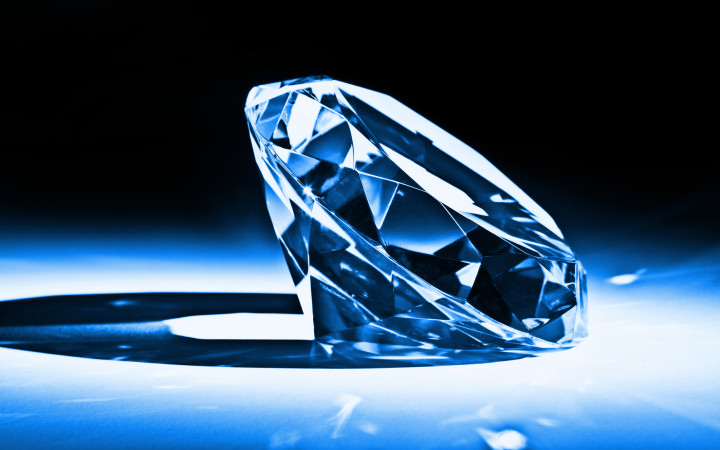Today’s Wonder of the Day was inspired by Angela. Angela Wonders, “Why does it rain diamonds on Neptune?” Thanks for WONDERing with us, Angela!
Earth hosts life. Saturn has rings. Mars is covered in red dust, and Jupiter is enormous. Yes, every planet in the solar system has special features that make it stand out among the rest. Don’t believe us? Just look at Neptune—it’s raining diamonds there!
As the farthest planet from the Sun, Neptune has long been difficult to study. In fact, it’s one of only two in our solar system that can’t be seen with the naked eye. Neptune was also the only planet predicted to exist by mathematicians before it was ever actually seen.
Today, though, people know more about Neptune than ever before. In 1981, scientist Marvin Ross predicted that the planet had diamond rain. He said both ice giants (Neptune and Uranus) may experience this phenomenon. In 2020, an experiment proved it could happen.
To carry out this experiment, researchers at Stanford University modeled the conditions on Neptune inside their lab. They started by applying extreme heat and pressure to polystyrene. Then, they sent shockwaves through the material using a laser.
Using x-rays, they watched what happened. The elements that make up polystyrene split from each other. This resulted in carbon and hydrogen atoms. Under pressure, the carbon turned into diamonds before their eyes. Based on these findings, the researchers believe it’s likely that diamonds do indeed rain down on the planet Neptune.
Just imagine! What would it be like to get caught in the middle of a diamond shower on Neptune? No human being can speak to the experience (yet). Still, experts have learned quite a bit about this planet since its discovery in 1846.
On Neptune, a year lasts 60,190 Earth days. However, the farthest planet from the Sun experiences shorter days than we do on Earth. Neptune completes a full rotation once every 16 hours.
Just how far is Neptune from the Sun? About 2.8 billion miles! In fact, the planet is sometimes farther from the Sun than Pluto is. That’s one reason why human beings have such a hard time studying the planet. It’s difficult to get there! Only one spacecraft, Voyager 2, has visited Neptune.
Does that mean Neptune is lonely? Not necessarily. It has five rings and 14 moons to keep it company. However, the planet is not capable of supporting life as we know it.
Would you like to see a diamond shower on Neptune one day? Anything is possible. Maybe you’ll invent the next great space technology that will take us there!
Standards: NGSS.ESS1.B, NGSS.PS1.A, NGSS.PS1.B, CCRA.R.4, CCRA.L.3, CCRA.L.6, CCRA.R.2, CCRA.R.10, CCRA.R.1, CCRA.R.2, CCRA.SL.1, CCRA.SL.2, CCRA.SL.1, CCRA.SL.2, CCRA.W.3, CCRA.W.4, CCRA.L.1, CCRA.L.2




